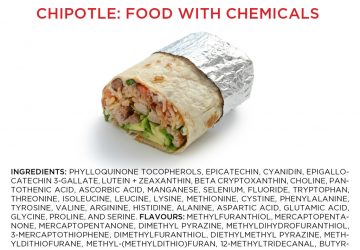 Last week, a farmer in Oregon claimed that he found genetically modified wheat in his field that wasn’t supposed to be there. (Biotech wheat is not currently commercialized in the United States.) That has set off two stampedes: The media has stampeded into the arms of the anti-scientific anti-biotechnology community while trial lawyers have stampeded to the nation’s courthouses to file multimillion-dollar class-action lawsuits against seed developers.
Last week, a farmer in Oregon claimed that he found genetically modified wheat in his field that wasn’t supposed to be there. (Biotech wheat is not currently commercialized in the United States.) That has set off two stampedes: The media has stampeded into the arms of the anti-scientific anti-biotechnology community while trial lawyers have stampeded to the nation’s courthouses to file multimillion-dollar class-action lawsuits against seed developers.
The official story goes something like this. Back in the early 2000s, seed developers attempted to commercialize a strain of wheat genetically engineered to resist certain pesticides. The Food and Drug Administration ruled the wheat safe to consume, but the seeds were not commercially viable so they were comprehensively destroyed several years ago. Now, as if by magic, the wheat has appeared in a farmer’s field, he discovered it by spraying it with a weed-killer it was designed to resist, and nobody knows how it got there. There are a lot of unanswered questions, in short.
However, between the end of the wheat trials and this discovery, seed company Bayer CropSciences settled a $750 million lawsuit by rice farmers after an engineered rice strain caused anti-biotechnology Europeans to suspend rice imports. And sure enough, at least two lawsuits have been filed against Monsanto Corp., the company that developed the wheat strain, already. One is led by the Luddite “Center for Food Safety,” an anti-biotechnology organization that has campaigned against scientific agriculture for at least a decade.
But before the ladies and gentlemen of the jury make their verdict, perhaps the world should figure out how exactly the seeds got into the field. Monsanto, the seed company, suspects a saboteur deliberately planted the unauthorized wheat to cause harm to the company. That wouldn’t shock us given the fringe tactics of anti-biotechnology campaigners, who have committed widespread vandalism in the past.
Iowa State agriculture law center Director Roger McEowen is also skeptical of the validity of the Luddite lawyers’ claims. He told the Associated Press: “To put together a big complaint like this within five days after the news broke sounds to me like it was in the works before the news story broke out in Oregon.” If this speculation has merit, it contributes to the finding’s questionable nature.
The timing smells fishy and the circumstances are fishy. The only thing that isn’t fishy is, ironically, the perfectly safe wheat supposedly at the center of everything. The American Association for the Advancement of Science has determined that the safety of producing foods with biotechnology is quite clear: It’s safe. But if you’re an ideologue or a trial lawyer, science isn’t your motivation.




